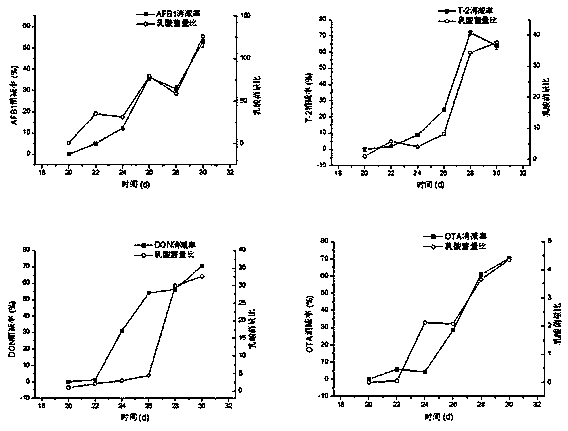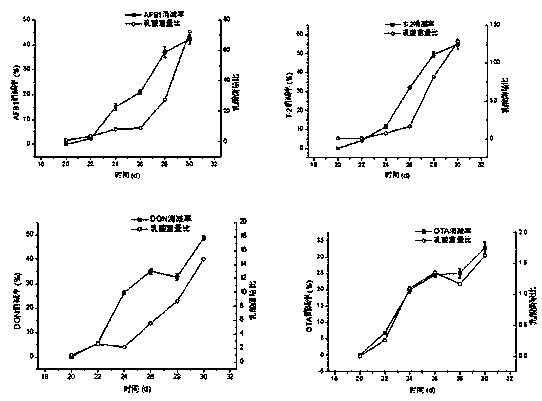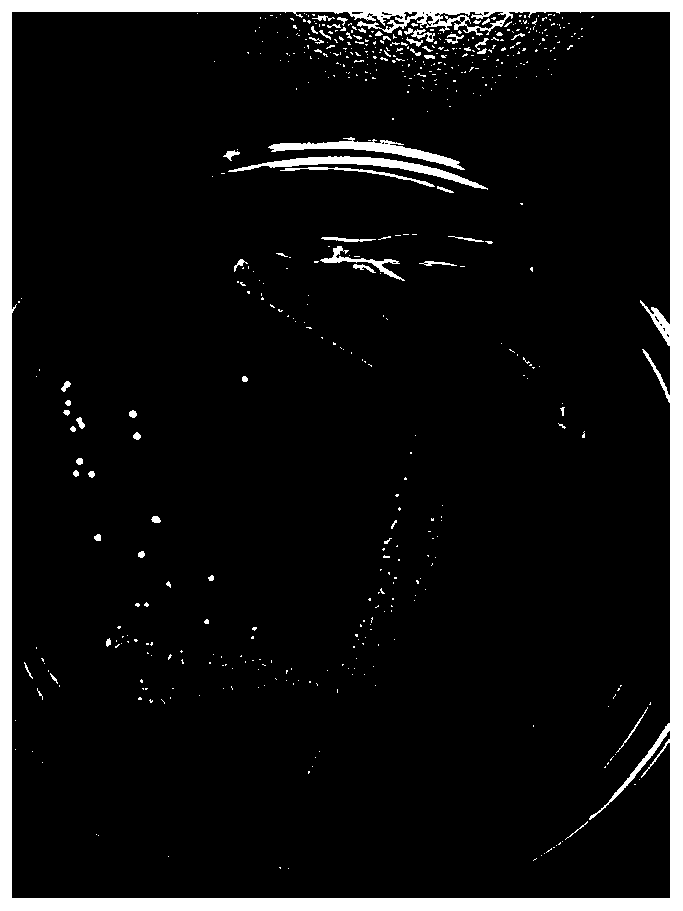A method for Lactobacillus acidophilus to degrade mycotoxins in animals
A technology of Lactobacillus acidophilus and mycotoxins, applied in Lactobacillus, animal feed, animal feed, etc., can solve the problems of economic loss in aquaculture, reduction of muscle quality, and limited types of toxins degraded by a single species of bacteria
- Summary
- Abstract
- Description
- Claims
- Application Information
AI Technical Summary
Problems solved by technology
Method used
Image
Examples
Embodiment 1
[0022] (1) Toxicity test on shrimp and tilapia
[0023] Randomly select Penaeus vannamei with healthy physique and uniform individual size (5±0.5g per tail), and randomly distribute them to rectangular hard plastic breeding boxes (volume 40×30×12cm 3 ), use an inflatable culture system to maintain seawater dissolved oxygen DO>6mg / L, pH 6.5-7.5; water temperature 24-28°C; salinity 9.18-11.99%. Change 1 / 3 volume of water every day. Using natural light, feed 5% of the body weight of Penaeus vannamei every day, divided into three times a day, once at 9:00 am, once at 3:00 pm, and once at 9:00 pm. The daily feed-to-feed ratio is 2:3: 5.
[0024] Randomly select tilapias with healthy body and uniform individual size (fish weight 10±05g), and randomly distribute them to rectangular hard plastic breeding boxes (volume 40×30×12cm) according to 30 fish in each group (set 3 parallels). 3 ), water temperature: 25-28 ℃, dissolved oxygen concentration >5 mg / L, pH 7.8-8.2, ammonia nitroge...
PUM
 Login to View More
Login to View More Abstract
Description
Claims
Application Information
 Login to View More
Login to View More - R&D
- Intellectual Property
- Life Sciences
- Materials
- Tech Scout
- Unparalleled Data Quality
- Higher Quality Content
- 60% Fewer Hallucinations
Browse by: Latest US Patents, China's latest patents, Technical Efficacy Thesaurus, Application Domain, Technology Topic, Popular Technical Reports.
© 2025 PatSnap. All rights reserved.Legal|Privacy policy|Modern Slavery Act Transparency Statement|Sitemap|About US| Contact US: help@patsnap.com



